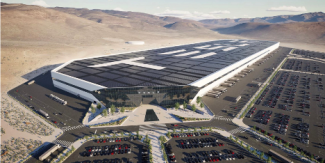
Electrification
With the explosive demand for artificial intelligence (AI) and machine learning datacenters comes the realization that some things will need to change and we will need to adapt to these changes. We’ve talked about some of those changes in prior articles. Today, let’s look at this purely from an energy standpoint. Electrification is the idea of converting from fossil fuels – gas, oil, and coal – to electricity generated from renewables. Electricity, on its own, has no carbon footprint, though the ways in which we generate electricity can have a carbon footprint. Demand for more datacenters is an important factor when it comes to demand for electricity. There are other areas, however, that will also change where and how we get our electricity – net zero goals, manufacturing, upgrading, and increases in global GDP. We will briefly discuss each.
AI and Machine Learning
To meet the demand for AI and machine learning, technology companies need more and faster datacenters. Currently, datacenters consume approximately 460 terawatt-hours (TWh) of electricity annually. One TWh is the equivalent of a billion-kilowatt (kWh) hours. In just two years, the amount of electricity consumed by data centers is expected to more than double to 1,000 TWh. Twenty years ago, datacenters only used roughly 50 TWh annually as these primarily only focused on storage1. The average US household uses just 10,500 kWh or 0.00000105% of what datacenters are expected to use2. The increase in demand for datacenters could become a burden on the current electrical grid unless the datacenters are more self-supportive. Companies like Meta are making large investments in solar to be mostly self-sustaining and reduce the strain on the same grid that people rely on to cool their homes, power their devices, or charge their electric vehicles3.
Net Zero Goals
Most of the world has accepted that we are experiencing climate change and that excessive carbon emissions are harmful to the environment. Many companies have been putting plans in place to be net zero – have zero carbon emissions from their operations. One way for companies to transition towards being net zero is to implement more renewable or lower-carbon energy sources – solar, wind, hydro, geothermal, biofuels, and nuclear. Natural gas, while still considered a fossil fuel, emits significantly less carbon per unit of energy produced than oil or coal and is still very inexpensive. For this reason, it is often used by companies and countries that are transitioning to eventually become net zero. This accelerated push by companies, governments, and consumers is increasing demand for electrification. Twenty years ago, burning coal generated roughly 50% of our electricity in the US. Today, that represents 17-19%. Natural gas represented around 20% of generated electricity twenty years ago and today represents 37-39% of generated electricity. Renewable energy made up just 9% of generated electricity twenty years ago and today represents 24-26% of generated electricity4. We have come a long way, but we still have a way to go to be net zero. We will be relying more on renewable sources in the years ahead to close the gap toward net zero emissions.
Manufacturing
The trend of reshoring of some manufactured goods back to the US will inevitably increase demand for electricity. But automated or robotic-assisted manufacturing will also increase electricity demand. With the increased demand, however, we also may gain some improved efficiency with lighting, heating and cooling systems, and other areas. Given that more testing and design can be assisted by AI or machine learning could mean that processes could be fine-tuned better pre-production rather than post-production, saving some electricity usage.
Upgrading
We will likely gain some efficiency when old items or processes are replaced with newer ones. This can apply to older datacenters, older TVs, computers, refrigerators, solar panels, electric vehicles, or electric-powered machines. We will likely be transitioning more to renewables at the same time products are going to require less electrical output, a win-win regarding strain on the grid.
Global GDP Growth
Perhaps the greatest challenge to electrification is economic growth. Increased wealth has tended to increase demand for electricity. This is especially true in countries that are still emerging or have demographics that are transitioning more to a middle class. Consumers buying their first microwave oven, their first washer and dryer, or their first refrigerator or freezer will now be on the grid. While it will be life-changing for them, we need to make sure that they can be supported. This is more of a problem outside the US than in the US. But it is not just the poorer countries with accelerated economic growth that will put a strain on grids. Economic growth in the most developed countries will mean expanding cities and growing suburban areas. It will mean more homes, more commercial buildings, more power lines and generators, more transformers, more road construction, more mining of materials to produce more batteries, more investment into solar panels and more datacenters and warehouses to store goods. Aside from electricity, this growth, especially the mining and construction inputs, will increase the use of fossil fuels and water at a time when we are seeking to limit the use of these resources. The challenge will be to increase electricity efficiency and supply while simultaneously more demand is created. Environmentally, we also need to be aware that regardless of how clean and green we become in the US, the rest of the world may be increasing pollution, greenhouse gases, and CO2 at precisely the same time that much of the developed world is reducing it. This is largely due to their having higher economic growth and a lack of renewable infrastructure. Because there is simply not enough renewables and the required investment to utilize more natural gas is high, China and India are burning much more coal. In 2023, China generated 62-65% of its electricity from burning coal while India generated 70% of its electricity from coal5.
In Summary
Increasing numbers of datacenters, a focus on getting to net-zero carbon emissions, increased manufacturing, upgrading of the old with the new, and increased economic growth will all factor in with electrification, both here and abroad. But if we can estimate better the increased demand, we can adjust to increase supply, particularly in areas of storage and batteries and sources such as solar arrays, geothermal, hydro, and wind. Natural gas and nuclear will likely continue to play a role in electrification until we can get to the point of true net zero emissions. One risk of electrification is that of fragility, especially if there are not multiple redundancies spread over a multiple areas. This is evident as it relates to extreme temperatures or natural disasters such as wildfires, tornadoes, earthquakes, or blizzards. But the system is also vulnerable as it relates to potential geopolitical conflicts or cyber-attacks. If we are to rely wholly on electricity, a worthy goal, we should ensure there are many layers of safeguards and backups as well as regional levels of autonomy based on if-then disaster recovery logic. With all the new breakthroughs that are being assisted by AI and machine learning, it’s quite possible that AI and/or machine learning could contribute to the optimal framework for electrification security here in the US and a transition away from the most harmful form of electricity production, coal.

